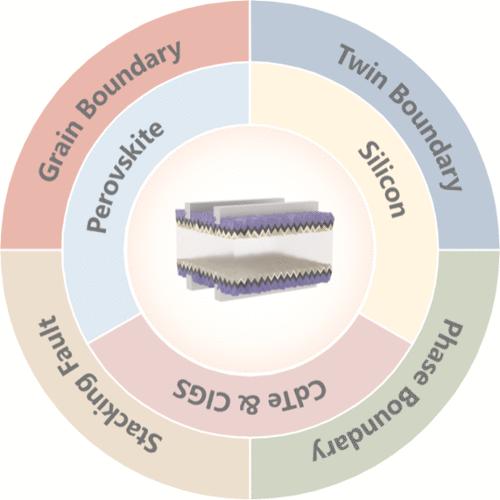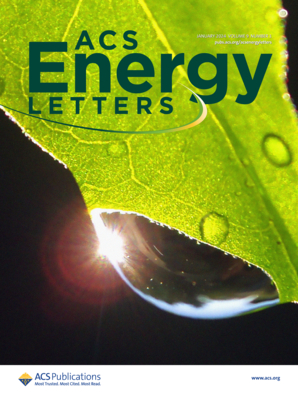Using Electron Microscopy to Explore Solar Cell Interfaces: Microstructures, Efficiency, and Stability
IF 19.3
1区 材料科学
Q1 CHEMISTRY, PHYSICAL
引用次数: 0
Abstract
Solar cell interfaces, including grain boundaries, twin boundaries, stacking faults, and phase boundaries, are the main nonradiative recombination and degradation sites and affect the photoelectric conversion efficiency and stability of solar cells, making it necessary to understand their fine structures and properties. Electron microscopy has provided micrometer/nanometer/atomic-scale structural information for investigating the microstructure of materials to unravel the structure–performance relationships of solar cells. Electron microscopy and related techniques have recently been used to investigate solar cell interfaces, but there has been no systematic summary of this research. In recent years, advances in technologies such as electron microscopy imaging, electron spectroscopy, in situ electron microscopy, and detectors have greatly expanded researchers’ understanding of the interface properties of solar cells. This Review covers the research on the interfaces in perovskite/silicon/CdTe and Cu(In,Ga)Se2 (CIGS) solar cells using electron microscopy and provides prospects for further progress.

利用电子显微镜探索太阳能电池界面:微结构、效率和稳定性
太阳能电池界面,包括晶界、孪晶界、堆叠断层和相界,是主要的非辐射重组和降解场所,影响太阳能电池的光电转换效率和稳定性,因此有必要了解其微观结构和性能。电子显微镜为研究材料的微观结构提供了微米/纳米/原子尺度的结构信息,从而揭示了太阳能电池的结构-性能关系。最近,电子显微镜和相关技术被用于研究太阳能电池界面,但这方面的研究还没有系统的总结。近年来,电子显微镜成像、电子能谱、原位电子显微镜和探测器等技术的进步极大地扩展了研究人员对太阳能电池界面特性的理解。本综述涵盖了利用电子显微镜对过氧化物/硅/碲化镉和铜铟镓硒太阳能电池界面的研究,并对进一步的研究进展进行了展望。
本文章由计算机程序翻译,如有差异,请以英文原文为准。
求助全文
约1分钟内获得全文
求助全文
来源期刊

ACS Energy Letters
Energy-Renewable Energy, Sustainability and the Environment
CiteScore
31.20
自引率
5.00%
发文量
469
审稿时长
1 months
期刊介绍:
ACS Energy Letters is a monthly journal that publishes papers reporting new scientific advances in energy research. The journal focuses on topics that are of interest to scientists working in the fundamental and applied sciences. Rapid publication is a central criterion for acceptance, and the journal is known for its quick publication times, with an average of 4-6 weeks from submission to web publication in As Soon As Publishable format.
ACS Energy Letters is ranked as the number one journal in the Web of Science Electrochemistry category. It also ranks within the top 10 journals for Physical Chemistry, Energy & Fuels, and Nanoscience & Nanotechnology.
The journal offers several types of articles, including Letters, Energy Express, Perspectives, Reviews, Editorials, Viewpoints and Energy Focus. Additionally, authors have the option to submit videos that summarize or support the information presented in a Perspective or Review article, which can be highlighted on the journal's website. ACS Energy Letters is abstracted and indexed in Chemical Abstracts Service/SciFinder, EBSCO-summon, PubMed, Web of Science, Scopus and Portico.
文献相关原料
| 公司名称 | 产品信息 | 采购帮参考价格 |
|---|
 求助内容:
求助内容: 应助结果提醒方式:
应助结果提醒方式:


